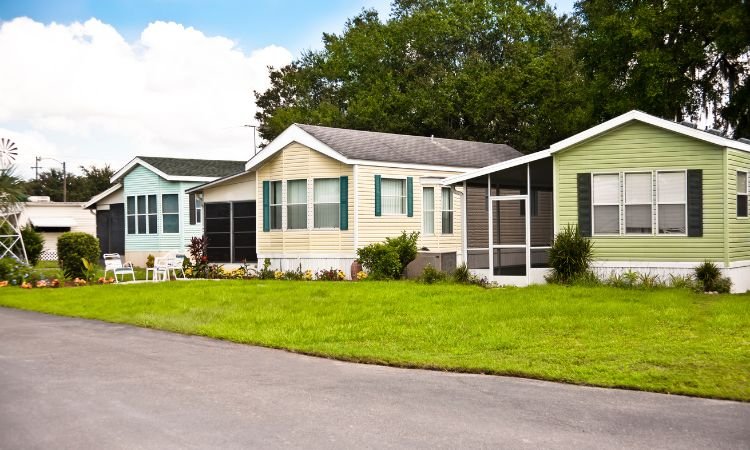Manufactured housing, often referred to as mobile homes or prefabricated housing, is a critical part of the global housing market. These homes are built in factories and then transported to a permanent location, offering an affordable and efficient solution to housing needs. The global Manufactured Housing Market Size reached USD 24.42 billion in 2023, with projections to grow at a compound annual growth rate (CAGR) of 5.8% between 2024 and 2032, reaching an estimated value of USD 40.56 billion by 2032.
This article delves into the key benefits of manufactured housing, recent industry developments, market drivers and restraints, segmentation, and an in-depth analysis of the market’s outlook. We will also examine key players in the industry, emerging opportunities, challenges, and the scope of future growth.
Key Benefits of Manufactured Housing
- Affordability: Manufactured homes offer a cost-effective alternative to traditional site-built homes, reducing construction costs and time.
- Customization: Buyers can tailor the design and layout of their homes to suit personal preferences, making it a flexible option.
- Energy Efficiency: Modern manufactured homes incorporate sustainable materials and technologies, significantly reducing energy consumption.
- Quick Construction: Since homes are factory-built, they can be constructed much faster than traditional homes, reducing lead times.
- Improved Quality Control: Factory environments ensure that every stage of the building process is closely monitored, leading to higher quality standards.
Key Industry Developments
- Technological Advancements: The use of advanced building materials and green technologies has significantly enhanced the durability and energy efficiency of manufactured homes.
- Government Incentives: Several countries are offering tax incentives and affordable housing schemes to encourage the use of manufactured homes, especially for low-income families.
- Sustainability Initiatives: Companies are increasingly focusing on sustainable and eco-friendly building practices, aligning with global trends towards environmental responsibility.
- Mergers and Acquisitions: Key players in the market are consolidating through mergers and acquisitions, improving market reach and production capacity.
Driving Factors
- Housing Affordability Crisis: Rising property prices in many countries have made homeownership unaffordable for many, boosting demand for cost-effective manufactured homes.
- Favourable Government Policies: In regions like North America and Europe, governments are promoting manufactured homes as part of affordable housing strategies.
- Urbanisation: As cities become more populated, manufactured homes provide a scalable solution to housing shortages, especially in suburban areas.
- Advancements in Manufacturing Technology: The rise of smart technologies in the manufacturing sector has improved the efficiency and quality of prefabricated homes, making them more appealing to potential buyers.
Restraining Factors
- Perception Issues: Many potential buyers still associate manufactured homes with low quality and a temporary solution, limiting the market’s growth potential.
- Financing Challenges: Obtaining financing for manufactured homes can be more difficult than for traditional homes, which could restrict market access for some consumers.
- Regulatory Hurdles: Stringent zoning laws and building codes in some regions may restrict the placement and construction of manufactured homes.
- Durability Concerns: Although quality has improved, some consumers are still concerned about the long-term durability of manufactured homes compared to traditional housing options.
Market Segmentation
The global manufactured housing market is segmented based on:
- Type: Single-section homes, multi-section homes, and modular homes.
- Application: Residential, commercial, and industrial sectors.
- Region: North America, Europe, Asia-Pacific, Latin America, and the Middle East & Africa.
Type Segmentation
- Single-section Homes: These are smaller, more affordable homes, typically designed for individuals or small families.
- Multi-section Homes: Offering more space and flexibility, these homes are ideal for larger families and are often customised to meet specific requirements.
- Modular Homes: A higher-end segment of manufactured homes, modular homes offer the look and feel of traditional homes but are built in sections off-site.
Application Segmentation
- Residential: The primary driver of demand, as manufactured homes offer affordable housing solutions for individuals and families.
- Commercial: Prefabricated office buildings and temporary structures used in industries like construction and education.
- Industrial: Used for temporary accommodations, warehouses, or storage solutions on industrial sites.
Market Outlook
The global manufactured housing market is expected to grow steadily over the next decade, driven by increasing demand for affordable housing, government support, and technological innovations. The market’s growth will be strongest in developing economies, where urbanisation and housing shortages are more pronounced. Additionally, with sustainability becoming a key concern, there will be a growing emphasis on energy-efficient and eco-friendly manufactured homes.
Market Overview and Trends
- Sustainability: An increasing focus on sustainability is driving the adoption of eco-friendly materials and energy-efficient designs in manufactured homes.
- Smart Homes: Integration of smart home technologies such as automated lighting, security systems, and energy management is becoming a popular trend in the market.
- Customisation and Personalisation: Consumers are demanding more personalised and customisable housing solutions, prompting manufacturers to offer a range of design and layout options.
- Growth in Modular Homes: Modular homes, offering a middle ground between traditional homes and manufactured housing, are becoming more popular due to their aesthetic appeal and high-quality construction.
Regional Analysis and Insights
- North America: The largest market for manufactured housing, driven by affordability concerns and government incentives. The U.S. and Canada are major contributors to this market’s growth.
- Europe: European countries are increasingly turning to manufactured homes to address housing shortages, particularly in the UK and Germany.
- Asia-Pacific: Fast-growing economies like China and India are experiencing a boom in the demand for affordable housing, with manufactured homes providing a quick and cost-effective solution.
- Latin America: The market is still emerging but shows great potential, especially in countries like Brazil and Mexico, where housing deficits are prevalent.
- Middle East & Africa: Although adoption is slow, the region’s potential for growth is high due to increasing urbanisation and the need for affordable housing solutions.
Opportunities
- Urbanisation in Developing Economies: Rapid urbanisation in regions like Asia-Pacific and Africa presents significant opportunities for the manufactured housing market.
- Sustainability Initiatives: The shift towards eco-friendly homes is expected to provide growth opportunities for manufacturers who prioritise green building practices.
- Technological Advancements: Innovations in building materials, smart home integration, and manufacturing processes will open new avenues for market expansion.
Challenges
- Stigma and Perception Issues: Overcoming the negative stigma associated with manufactured homes remains a challenge for the industry.
- Regulatory Barriers: Zoning laws and regulatory restrictions can limit the placement of manufactured homes, particularly in urban areas.
- Financing Difficulties: Limited access to financing options may prevent lower-income buyers from entering the market.
Scope
The scope for growth in the manufactured housing market is broad, particularly in developing regions where affordable housing is in high demand. With advancements in technology and increasing governmental support, the market is expected to expand across residential, commercial, and industrial applications.
News and Recent Developments
- Acquisitions: Several key players are engaging in mergers and acquisitions to increase their market share and expand production capabilities.
- New Product Launches: Companies are introducing modular homes with cutting-edge features, including energy-efficient systems and customisable layouts.
- Government Initiatives: Policies promoting affordable housing are driving growth, especially in regions facing housing shortages.
Major Key Players in the Manufactured Housing Market
- Cavco Industries, Inc.
- Champion Home Builders, Inc.
- Clayton Homes, Inc.
- Domino Homes
- Skyline Champion Corporation
- Karmod Prefabricated Technologies
- General Coach Canada
- Ironwood Manufactured Homes
- Cumberland Japan Co., Ltd.
- Knight Mobile Homes Ltd.
- Others



